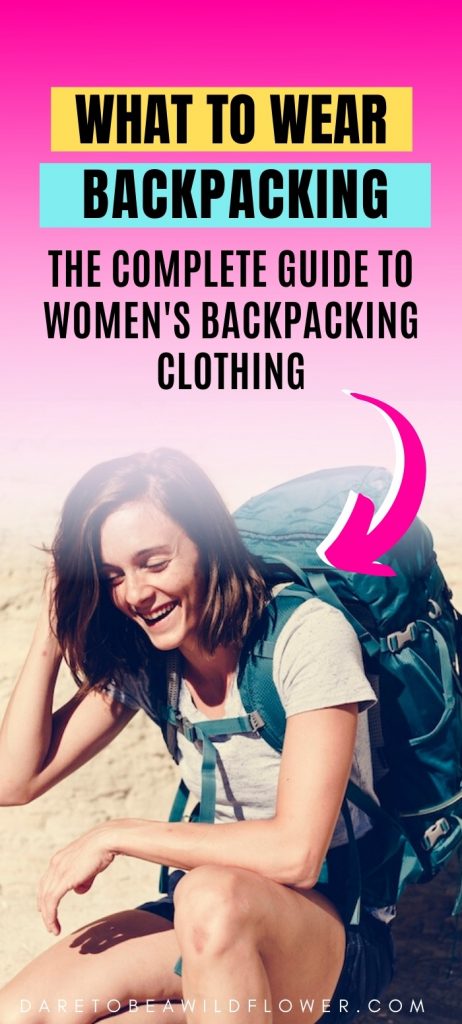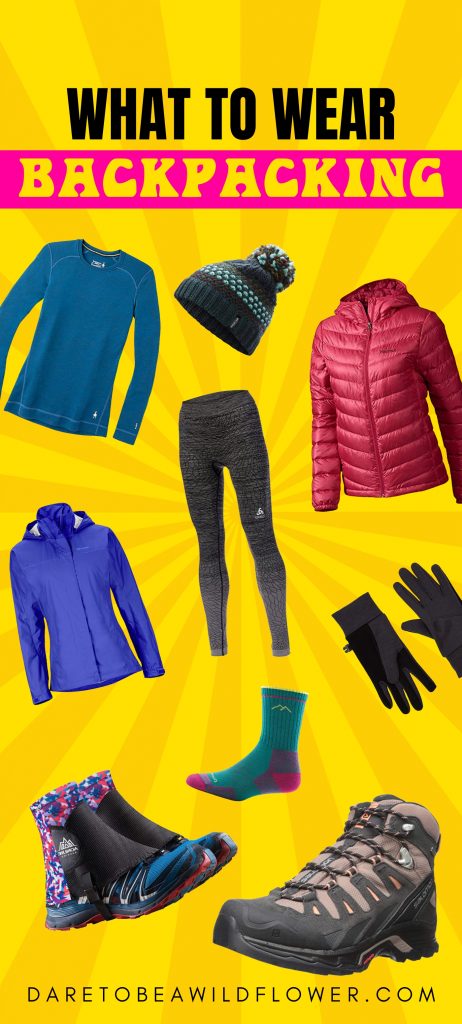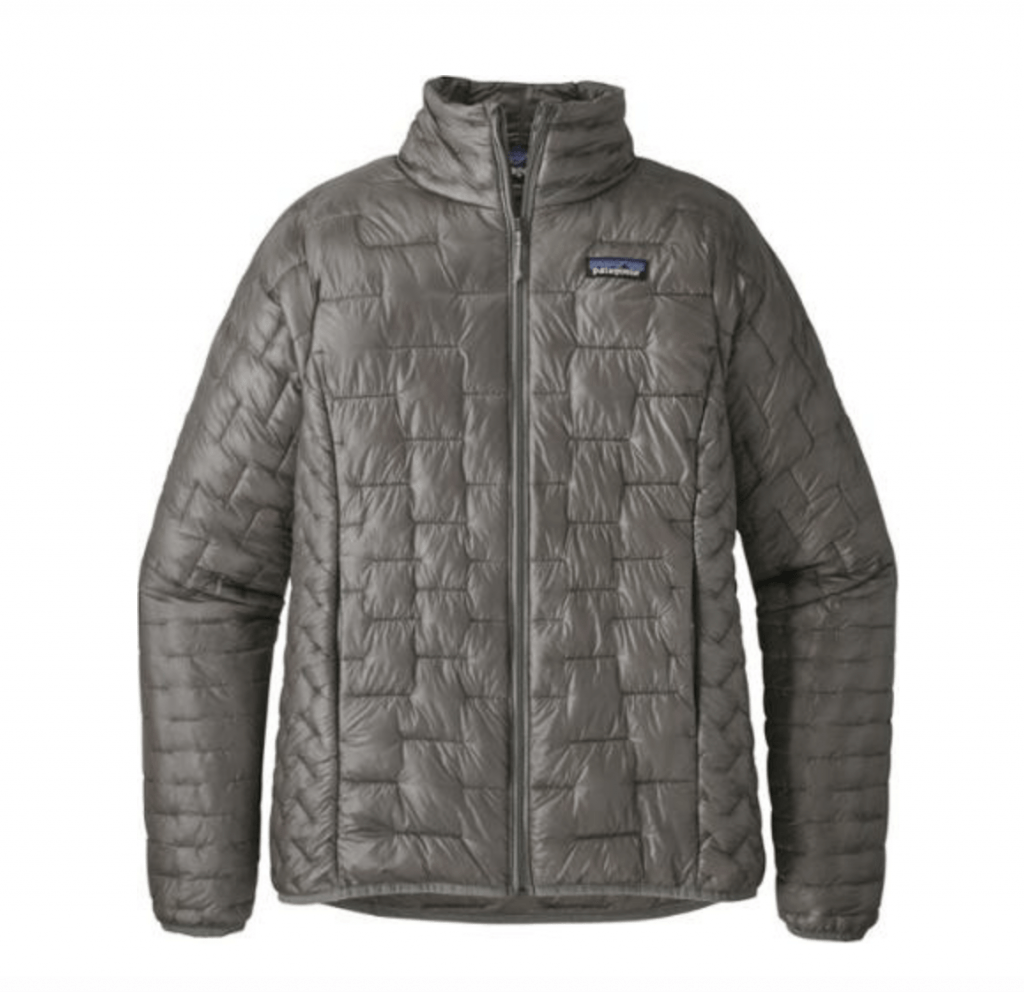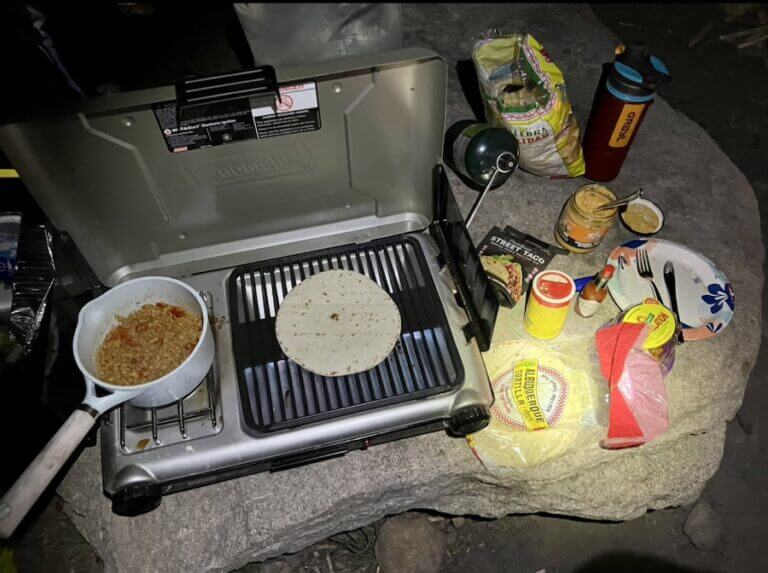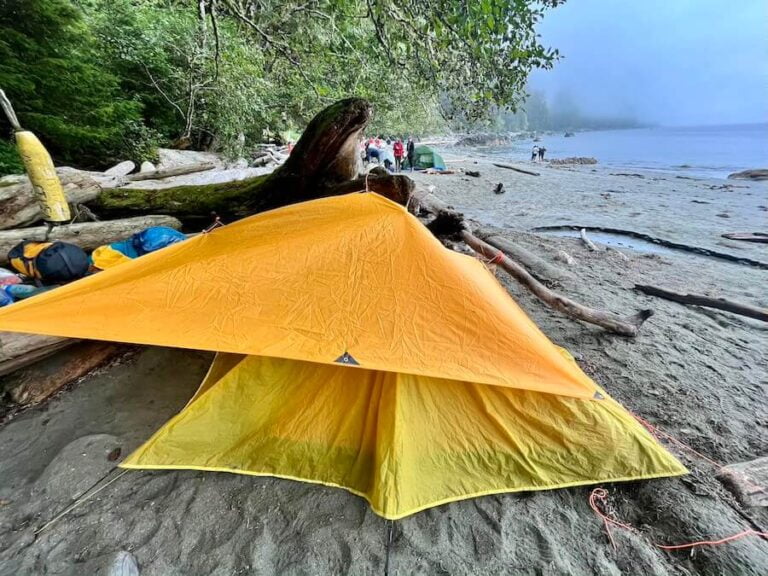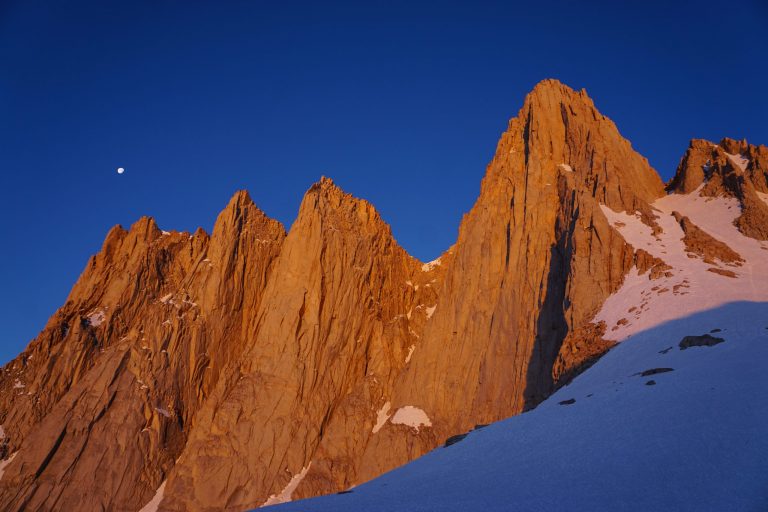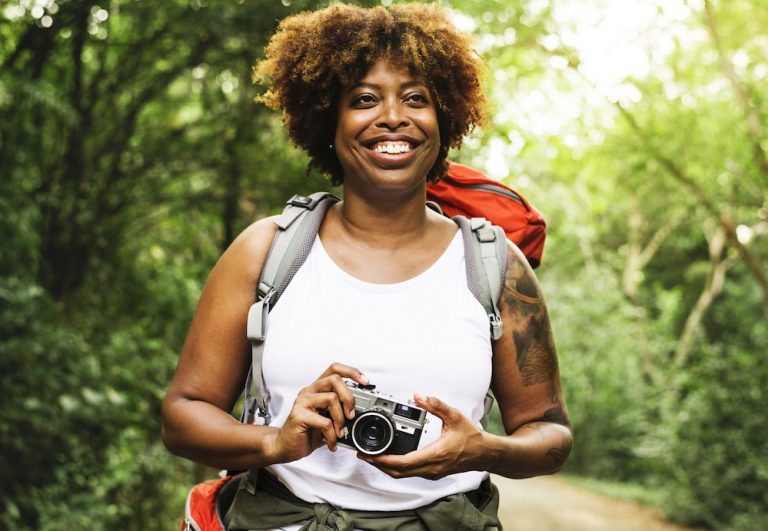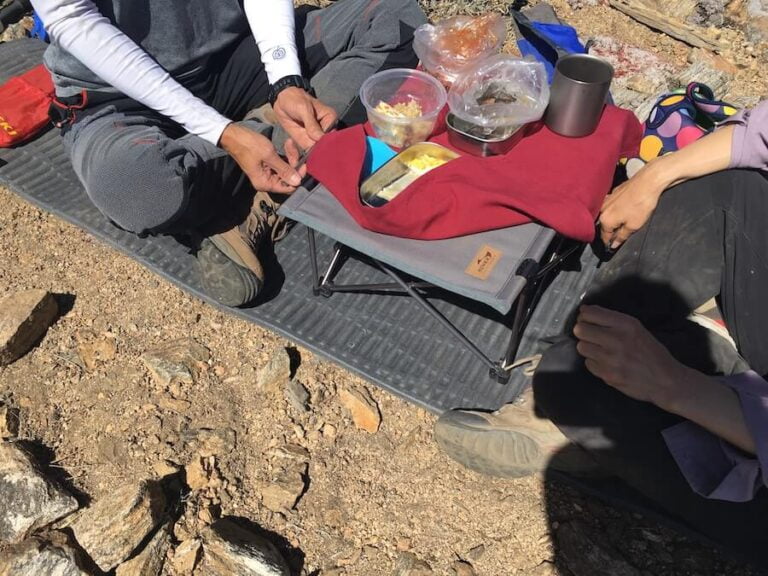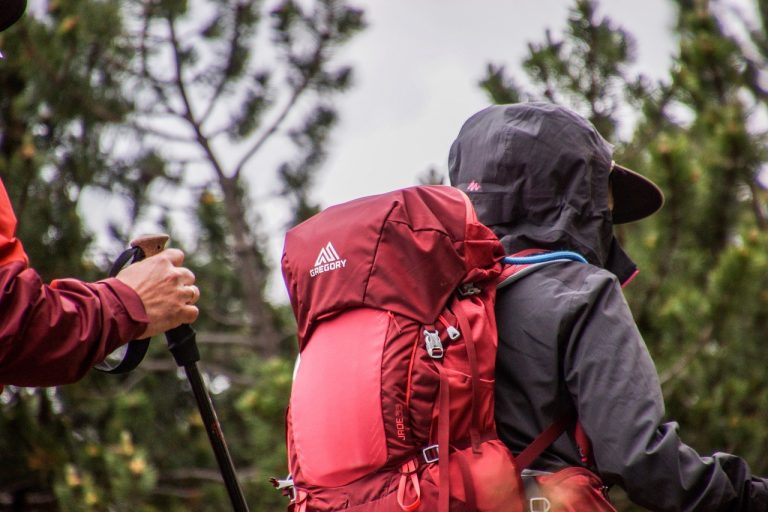Best Hiking & Backpacking Clothes For Women
Comfort is a catalyst to adventure and pushing yourself out of your norm and into an epic life.
Being prepared with the proper clothing is essential in the backcountry so you can confidently focus on the adventure in front of you, without any painful or agonizing distractions.
It’s the difference between having an awesome time backpacking out in the wild and having a suffer-fest.
There’s a lot to learn about women’s backpacking clothing. But once you understand how to dress in (and properly use) layers- you’ll be packin’ your pack like a pro.
Let the adventure begin. 🏕

This post may contain some affiliate links for your convenience. This means if you make a purchase after clicking a link, I may earn a small commission but it won’t cost you a penny more! Isn’t that rad? Thanks for supporting the work I do at daretobeawildflower.com. Click here to read my full disclosure policy.
Why You Shouldn’t Wear Cotton For (Most Of) Your Adventures
There’s a saying in the outdoor community: “cotton kills”
When cotton gets wet, it holds onto moisture leaving you wet, clammy, and cold. This could be a serious problem if you’re at elevation and there’s a cold breeze.
If you’re walking your dog on a local trail, wearing a cotton tee isn’t a big deal. But for big adventures that get you out there, do you yourself a favor and leave the cotton clothes at home.
Dress Like A Cartoon Character
What I mean by that is embrace wearing the same outfit every single day.
I know it seems odd but trust me: you don’t need a different outfit for every single day you’re backpacking.
The only things you’ll be switching up is your underwear and maybe your shirt.
Embrace your inner cartoon girl!
How To Dress In Layers
Let me explain why there are so many pieces of hiking clothing essential to having a comfortable backpacking trip, because I know- it looks overwhelming.
Each piece serves a specific function for a specific activity, for example:
- hiking midday vs. hiking early in the morning
- gloves to protect your skin from during in the sun all and gloves to keep your hands warm at night.
Dressing in layers allows us to quickly adapt our outfits to be functional and keep us comfy.
Here’s the basic breakdown of how to dress in layers:
- Underwear and Bra
- Base Layers
- Tops and Pants
- Mid Layers for Insulation
- Shells for Rain and Wind
- Sun or Cold Weather Accessories
Base Layers
Base layers are your next-to-skin layer, your first layer of backpacking clothing (well, besides your undies and bra).
They help regulate your temperature, wick sweat away from your body, and keep you warm when the temperature drops.
Comparing Materials for Base Layers
- Merino Wool: very warm, soft, and naturally antimicrobial. This means your base layers don’t get as stinky because the lanolin prevents bacteria from forming a smelly breeding ground. Merino wool base layers are great for extended backpacking trips, especially if you have tent mates.
- Synthetic: budget-friendly and vegan-friendly option. Typically made of polyester, synthetic fibers are great at wicking away sweat but tend to get very stinky, very fast.
- Silk: not as insulting as merino wool or synthetic fibers but useful for creating a barrier from other fabrics and keeping your skin comfy.
Sport Bras
Look for sport bras that:
- are moisture wicking (synthetic fibers are great for this)
- don’t have metal pieces on the straps or in the back.
- metal pieces can be very painful underneath your backpack
- have good stretch
Underwear
Wear underwear that are moisture-wicking, made of merino wool or synthetic fibers.
UPF Sun Protection Clothing
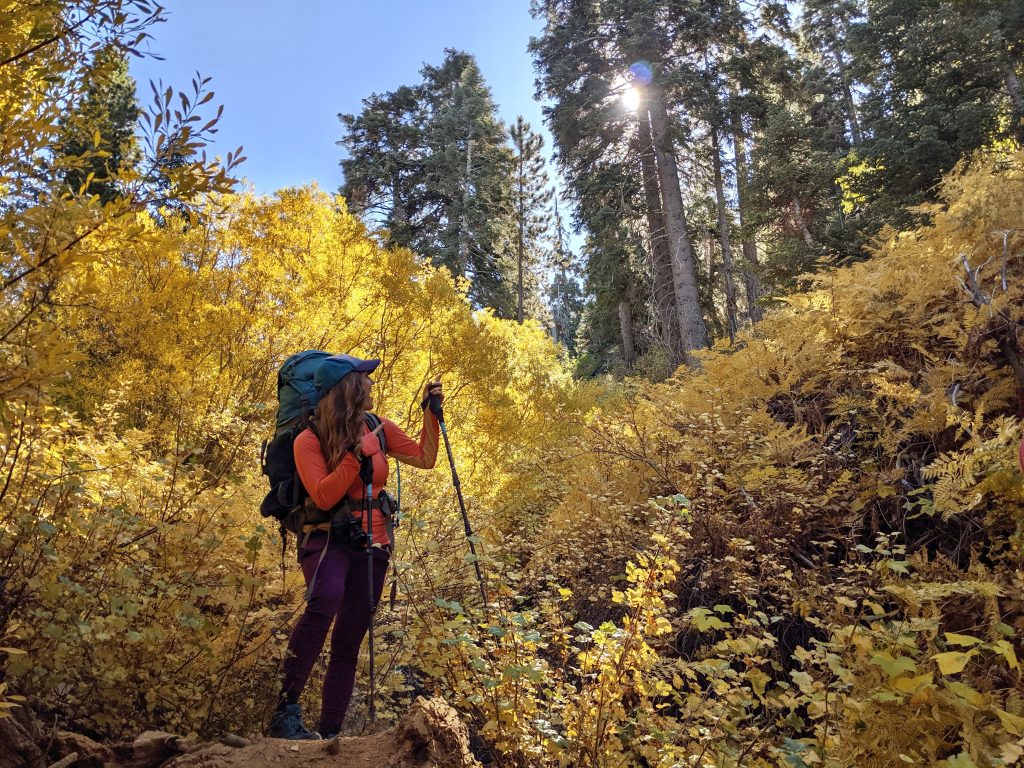
Be safe and protected. Sun protection clothing blocks harmful UVA and UVB rays to help prevent sunburns and long-term skin damage.
These materials have a tight weave construction with UV absorbent fibers that block the full spectrum of harmful UV rays.
Tops
When putting together your perfect arsenal of women’s backpacking clothing, always consider how things will feel underneath your backpack.
Although you can wear a tank top, you might find that exposing your skin to the pressure of your backpack strap (not to mention all the possible chaffing) to be irritating.
I recommend opting for a long sleeve sun shirt or at the least, a shoulder- covering moisture wicking tee to protect your skin from rubbing against your backpack.
Protecting your skin from the sun is super important when you’re out there all day, everyday (or at least several days in a row).
Often, I’ll wear a tank top with a UPF protected, button-down long-sleeve shirt, leaving the button shirt open to catch that cool, cool breeze.
Pants
As life-changing as a good pair of stretchy jeans may be, this isn’t the time or place for them. Opt for something synthetic, durable, stretchy, and with UPF protection.
Mid Layer
These are your warmest (and usually bulkiest) layers. They keep you warm and often make you look like a puffy, marshmallow. Embrace the puff! *hair flip*
Fleece Jacket
Fleece jackets are great for an added layer of warmth on cold nights and chilly mornings.
Throw it under your puffy jacket for when things get really cold.
Puffy Jacket
Insulation jackets are essential for keeping your core warm. If your core gets cold, your body will start pulling blood from your extremities (hello, frozen hands and toes) in order to keep your vital organs warm and functioning.
Insulation jackets are made of either down feathers or synthetic fibers:
Down Jackets
PROS
- Packs smaller
- Better warm-to-weight ratio
CONS
- More expensive
- More of a hassle to wash
- Doesn’t keep you warm if it gets wet
- Not always humanely sourced
Synthetic Jackets
PROS
- Vegan-friendly
- Less expensive
- Much easier to wash
- Still keeps you warm if it gets wet
CONS
- Bulkier
- Warmth-to-weight ratio usually isn’t as good as down
Outer Layers
Rain Jacket
A Rain Jacket aka a “hard shell” is a must for backpacking in the raining windy conditions.
Windy? Yup. The truth is, no matter how awesomely warm your big, puffy insulation layer is, if it’s windy- the cold wind will cut right through. It’s the absolute worst, trust me.
Be sure to pack a “shell” for all your backpacking adventures so you can stay dry and keep that cold, cold wind from freezing ya’ bones.
And as for sizing, sizing up is usually the move. You want enough room to be able to fit all the layers underneath and still be able to move your arms around.
Look for something that is:
- hooded
- seam-sealed
- waterproof-breathable
Rain Pants
Just as the name implies, these are pants for hiking in the rain (go figure). I highly recommend these if there’s a possibility of catching some rain (or super high winds) on your backpacking trip.
Without rain pants, you’ll end up getting totally soaked out in the mountains and have to pack around wet pants the next day… and that does not sounds like fun.
Size up for these because you’ll be sliding these over your trail pants.
Footwear
If you’re looking to buy some hiking footwear soon, be sure to read the 10 Things You NEED To Know Before Buying Hiking Boots. Shop smart. Don’t waste your money. 💛
So, boots, hiking shoes, or trail runner?
Well, that’s going to depend on the history of your feet and ankle injuries, the milage and elevation gain of your hike, as well as the terrain you’ll be hiking on.
Boots
Hiking boots are a great option for long hikes, heavy packs, previously injured ankles, and serious elevation gain.
Hiking Shoes
Hiking shoes give you that solid and durable support that you get from a boot, just without the ankle coverage.
Additionally, consider using a thin gaiter (see below) to keep annoying little things like rocks and twigs out of your shoes.
Trail Runners
Training runners are fantastic lightweight alternatives to hiking boots and shoes. They aren’t as durable or supportive but they’re crazy light and get the job done.
I only recommend that you wear trail runners on a backpacking trip if you have strong feet and ankles (with no significant injuries in the past).
Also, try them out on a shorter weekend trip with low milage before you embark on an epic backcountry adventure.
These trail runners have been my go-to’s for countless weekend backpacking trips over the years.
Base Camp Shoes
Base camp shoes are lightweight shoes you pack in to wear around-you guessed it, basecamp.
Basecamp is considered your home base campsite that you “create” and go for day hikes from there.
And when you’re hanging around basecamp cooking, cleaning, going to go filter water, or just hanging out- you’re going to want to kick off those hiking boots!
It’s so nice to let your feet breathe after a long day of hiking and kick around in your lightweight basecamp shoes.
When choosing a basecamp shoe, look for something:
- lightweight
- water-friendly
- has good traction for the trails
- doesn’t have any straps going through the toes so you can wear some thick socks and keep your feet cozy
Best Hiking Socks
Opt for a form-fitting sock that’s made of wool or synthetic fibers.
Remember, cotton kills! Go for synthetic or merino wool.
Sock Liners
If you struggle with getting blisters often, try using a sock liner to add an extra layer moisture-wicking to your feeties.
Note: Sock liners are designed to be work underneath your hiking sock, not as a replacement for a hiking sock.
Gaiters
Gaiters are great for keeping things like snow, rocks, and dirt out of your trial shoes.
If you decide to opt for trail runners or hiking shoes, a thin, lightweight trail gaiter would be the perfect accessory to keep you moving fast and happy on the trail (since you don’t have stop to get that pesky rock out of your shoe).
Backpacking & Hiking Clothing Accessories
Don’t let the word “accessories” fool you. Most of these items are essential when putting together your arsenal of women’s backpacking clothing.
Sun Protection
Bug Repellent Clothing Spray
- Insect-killing repellent for your clothing is effective against ticks, chiggers, mites and mosquitoes including the Zika-transmitting Yellow Fever Mosquito; as effective as 100 percent DEET
- Lasts up to 6 weeks (or 6 washings); will not stain or damage clothing, fabrics, plastics, finished surfaces, or outdoor gear
- Odorless after drying
- 24-ounce capacity treats up to 8 garments
Stay Warm 🔥
Cold weather accessories like a beanie, gloves, and a wool neck gaiter (my favorite!) can make all the difference during those freezing-cold, early morning starts and night time occasions.
We can lose a lot of heat from the crown of our head and the palms of our hands so these chilly climate clothing accessories are a must when it comes to staying cozy and comfy in the wilderness.
If you’ve never tried a neck gaiter, do yourself a favor and order one! I love pulling my Smartwool neck gaiter up over my nose and mouth in cold climates. Every time I breathe, the hot air from my breathe flows throughout the material and defrosts my face. Basically, it’s magic. 🤩
Wow, I’m seriously impressed you made it through all of that. See? I told you there was a ton to learn about women’s backpacking clothing.
Good for you for investing some time into educating yourself on how to be prepared with the right women’s hiking clothing.
Please let me know if you have any questions. I’m here for ya. 💛🌻🏕
Pin For Later | What To Wear Backpacking: The Complete Guide To Women’s Hiking Clothing
